Interlock Switches
In industrial environments, safety is of the utmost importance, and interlock switches can be an essential part of creating a safe environment. These devices can help prevent unauthorized use or dangerous operation of a machine based on the position of a guard or gate.
There are many different types of interlock switches, and knowing more about them can help you make the right decision for your organization.
-
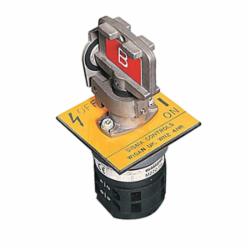 Allen-Bradley
Allen-BradleyAllen-Bradley Interlock Switches 440T-MRPSE11TA Rotary Switch
- Model #:
- 440T-MRPSE11TA
- UPC #:
- UPC: 78118009162
- Part #:
- 440T-MRPSE11TA
-
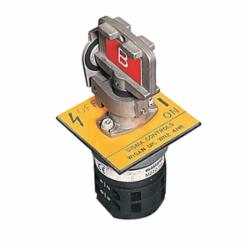 Allen-Bradley
Allen-BradleyAllen-Bradley Interlock Switches 440T-MRPSE100B Rotary Switch
- Model #:
- 440T-MRPSE100B
- UPC #:
- UPC: 66207302990
- Part #:
- 440T-MRPSE100B
-
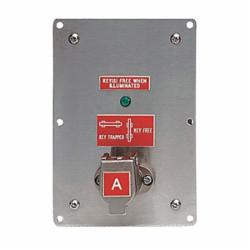 Allen-Bradley
Allen-BradleyAllen-Bradley Interlock Switches 440T-MSRUE110A Solenoid Release Unit
- Model #:
- 440T-MSRUE110A
- UPC #:
- UPC: 66207301118
- Part #:
- 440T-MSRUE110A
-
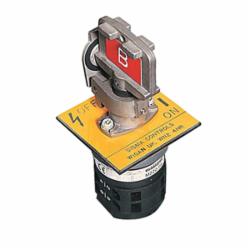 Allen-Bradley
Allen-BradleyAllen-Bradley Interlock Switches 440T-MRPSE11CA Rotary Switch
- Model #:
- 440T-MRPSE11CA
- UPC #:
- UPC: 61132070514
- Part #:
- 440T-MRPSE11CA
-
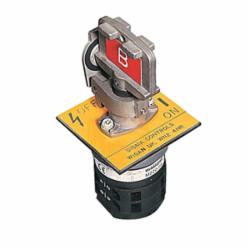 Allen-Bradley
Allen-BradleyAllen-Bradley Interlock Switches 440T-MRPSE100C Rotary Switch
- Model #:
- 440T-MRPSE100C
- UPC #:
- UPC: 66207307978
- Part #:
- 440T-MRPSE100C
-
 Allen-Bradley
Allen-BradleyAllen-Bradley Interlock Switches 440T-MSALE100F Trapped Key Interlock
- Model #:
- 440T-MSALE100F
- UPC #:
- UPC: 78118038552
- Part #:
- 440T-MSALE100F
What Is an Interlock Switch?
Interlock switches include a variety of styles and installation types, but they’re typically set up to cut power to a piece of equipment if certain requirements aren’t met, such as the closing of a gate. Most styles use an actuator of some sort that connects with safety contacts to trigger or block access or machine behavior.
Here’s how some popular styles work:
- Guard locking: Guard locking switches are key-operated. In addition to monitoring the gate’s position, they can also hold the gate closed until the equipment is deemed safe. They’re used in situations where the danger doesn’t immediately stop when the machine is powered off, like high-speed rotating equipment, or where early access could damage the product.
- Non-contact: Non-contact interlock switches don’t require any physical contact between the actuator and the switch. They may be activated by fiber optic or magnetic components. A magnetic switch, for instance, pairs a sensor and a specially coded magnetic actuator. They’re small and eliminate some issues that could come from physical damage to the actuator or clogged slots.
- Hinge: Hinge interlock switches can close doors and guards that are normally opened. They mount on the side of a door with a hinge and tend to better resist interference from dirt and oil. They are typically used when the guard is far from the hazard or the hazard stops quickly.
Common Problems
When installed, each type should have mechanisms in place to protect against common issues for that design. Possible factors that could impact operation include environmental factors that might trigger a fault, such as dirt particles or a clogged actuator slot.
Another issue to consider is how easy an interlock switch is to “fake.” Certain mechanisms must be in place to ensure the switch isn’t defeated. For instance, magnetic switches use an actuator that is specifically coded to the gate, so the switch can’t be triggered by any old magnet.
Finally, physical damage to the interlock switch can also impact its operation.
Benefits of Interlock Switches
Interlock switches offer several useful advantages:
- Engineering controls: If you’re looking to boost safety and security in a facility, engineering controls like interlock switches are one of the most effective options.
- Compact designs: Most interlock switches don’t take up much room.
- Versatility: There are many styles and types of devices to fit different hazards and facility layouts.
Interlock Switch Repair and Replacement
Like any piece of equipment, interlock switches may sometimes require repair. This process can look very different depending on the type of switch. Global Electronic Services offers interlock switch replacement parts and repairs and can help you get your switch back up and running for a safer facility. Browse our product selection or contact us for a quote!